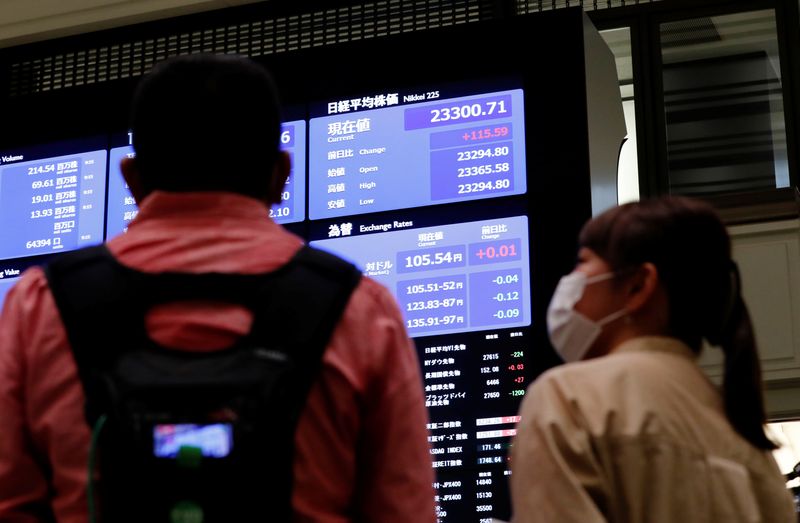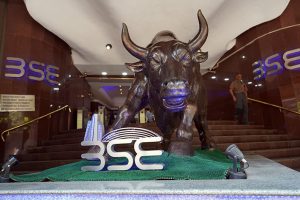Asia’s markets jumped back into life on Wednesday to record their best day in seven weeks, off the back of strong growth data from China’s manufacturing sector.
The news boosted gloomy investors amid widespread concern that US interest rates may be raised a few more times this year.
China’s official manufacturing purchasing managers’ index (PMI) data stood at 52.6 last month against 50.1 in January and was well ahead of an analyst forecast of 50.5, giving investors hope that China’s recovery can offset a global slowdown.
MSCI’s broadest index of Asia-Pacific shares outside Japan jumped 1.5% to leave behind a two-month low recorded in early trading hours, before the data release.
Hong Kong’s Hang Seng Index surged 4.21%, or 833.77 points, to 20,619.71, with developers and consumer-tech stocks leading the way and only two stocks falling. Chinese stocks also received a boost, with China’s blue-chip CSI 300 Index jumping more than 1%.
The Shanghai Composite Index rose 1.00%, or 32.74 points, to 3,312.35, while the Shenzhen Composite Index on China’s second exchange edged up 1.01%, or 21.73 points, to 2,163.82.
ALSO SEE:
China’s Factories See Fastest Growth Spurt in a Decade
Caixin data also strong
“The China February PMI data this time has assumed even greater importance due to the usual lack of January/February hard data until later this month,” said Alvin Tan, head of Asia FX strategy at RBC Capital Markets.
“The China February official PMIs and Caixin manufacturing PMI all surprised strongly to the upside, and notably higher than the previous January figures.”
In currency markets, the dollar’s February gains seem to be running out of steam and Asian currencies advanced on the strength of the Chinese data – even as economic updates from India, Australia and South Korea came in weak.
China’s yuan rose about 0.4% – its most in more than a month – to 6.9063 to the dollar. The Australian dollar also reversed losses made after softer-than-expected Aussie growth and inflation figures and rose 0.3% to $0.6751.
The New Zealand dollar, which dropped nearly 4% last month, bounced off its 200-day moving average and rose 0.5% to $0.6217. The yen held at 136.35.
Meanwhile, the Nikkei in Japan rose 0.26%, or 70.97 points, to close at 27,516.53, while the broader Topix was up 0.23%, or 4.53 points, to 1,997.81. S&P 500 Futures gave up early losses to trade flat. European futures rose 0.1%.
Elsewhere across the region, Singapore, Manila, Bangkok, Mumbai, Taipei and Jakarta were also in the green but Wellington and Sydney edged down.
Higher rates the key concern
Keeping gains in check were worries about interest rates staying higher for longer in developed economies, which has been behind a shaky February in stock and bond markets.
The next flush of economic indicators are likely to be crucial as markets gauge whether future rate hikes are sufficiently priced in now.
Hotter-than-expected inflation readings in Europe overnight drove bond selling, before an unexpected dip in US confidence figures offered a glimmer of hope that rate hikes are biting and are perhaps within striking distance of peaking.
Two-year Treasury yields, a guide to short-term US rate expectations, are close to four-month highs, but at 4.8347%, are below a November peak of 4.8830%. Benchmark 10-year yields stood at 3.9396% in Asia.
Commodities rallied with China demand hopes and Brent crude futures were last 0.6% higher at $83.94 a barrel.
Gains steadied after rains in parts of the US winter wheat belt and optimism over a Russia-Ukraine export deal drove investors to liquidate some long positions.
Geopolitics also kept nerves elevated in the background. US President Joe Biden’s visit to Kyiv and Russian President Vladimir Putin’s abandonment of the last remaining nuclear arms control treaty with the US signalled a hardening of positions.
China, which signalled support for Russia by sending its top diplomat to Moscow last week, has issued a call for peace, though it has been met with scepticism and Washington has said in recent days it worries that China could send arms to Russia.
“Should Beijing send Russia arms, it risks a rapid geopolitical breaking of the world economy,” said Rabobank’s research head, Jan Lambregts. “Markets have not even begun to contemplate what this might mean.”
Key figures
Tokyo – Nikkei 225 > UP 0.26% at 27,516.53 (close)
Hong Kong – Hang Seng Index > UP 4.21% at 20,619.71 (close)
Shanghai – Composite > UP 1.00% at 3,312.35 (close)
London – FTSE 100 > UP 0.36% at 7,904.70 (0944 GMT)
New York – Dow < DOWN 0.71% at 32,656.70 (Tuesday close)
- Reuters with additional editing by Jim Pollard. This report was updated with the latest market figures at 1000 GMT.
ALSO SEE:
US Warns China Will Face ‘Real Costs’ for Lethal Aid to Russia
Chinese Firm in Talks to Sell Military Drones to Russia: Report
China’s Mining Probe Set to Cut World Lithium Supply by 13%























